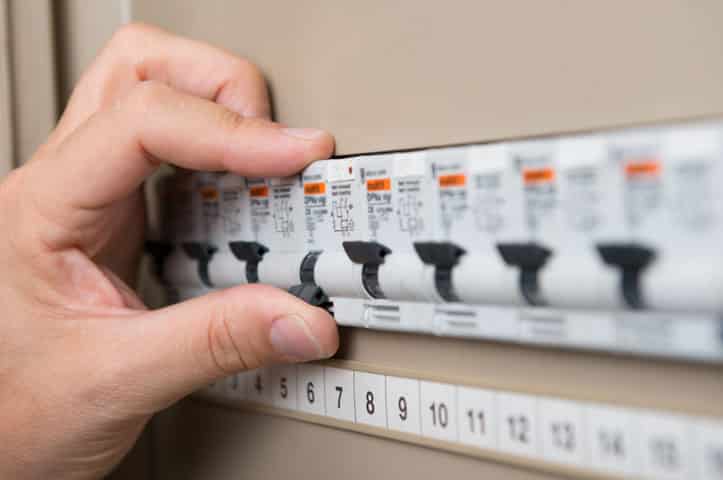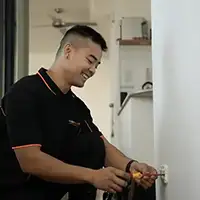If your lights flicker when you turn on the kettle, or your power trips every time the clothes dryer runs, your switchboard could be struggling. Many homes across NSW, especially those built before the early 2000s, still rely on outdated switchboards that aren’t designed for modern appliances or today’s electrical safety standards.
In this guide by Powerhub Electrical, we’ll help you figure out if it’s time for an upgrade, what signs to watch out for, and how a new switchboard can improve both safety and functionality in your home.
What a Switchboard Does
Your switchboard is the central hub of your home’s electrical system. Every light, appliance, and outlet draws power through this panel, so if it’s outdated, your entire system is vulnerable.
Controls Power Flow
The switchboard distributes power from your main electricity supply into individual circuits; lighting, power points, air conditioning, oven, and more. It ensures that each circuit gets the electricity it needs without overloading.
Houses Protective Devices
Inside the switchboard are fuses or circuit breakers, and in newer systems, RCBOs (combined safety switches and breakers). These components trip or disconnect the power when they detect a fault like a short circuit, overload, or leakage.
In modern NSW homes, switchboards must include residual current devices (RCDs) to protect people from electric shock, as required by AS/NZS 3000:2018.
Acts as Your Electrical Safety Hub
Your switchboard is your first line of defence when something goes wrong. Whether it’s a damaged appliance or a faulty power point, a functioning switchboard will isolate the issue before it causes fire, electrocution, or major damage.
If your board is full of ceramic fuses, lacks RCDs, or looks rusted or overcrowded, it might be time for a professional inspection.

Signs You Might Need a Switchboard Upgrade
These are the red flags we commonly find in older NSW homes and units:
Frequent Circuit Breaker Trips
If your power keeps cutting out, especially when running appliances like heaters, microwaves, or air conditioners, it could be a sign your circuits are overloaded. Old switchboards weren’t built to handle the combined load of today’s devices and high-power systems. Constant tripping is more than an annoyance, it’s your board warning you that something’s not right.
Outdated Fuse Board
Ceramic fuses are still found in homes across Sydney suburbs like Marrickville, Bankstown, and Dee Why. These systems don’t trip as quickly or safely as modern RCBOs and require manual replacement when they blow. If your switchboard has white ceramic blocks or rewireable fuse holders, it’s outdated and should be upgraded to a compliant system with circuit breakers and RCDs.
No Safety Switches
Modern standards require safety switches (RCDs) on all final subcircuits, lighting, power points, and wet areas. If your board doesn’t have visible RCDs or RCBOs (marked with a “Test” button), it may not protect you from electric shock.
Buzzing, Heat or Burn Marks
A buzzing sound, heat radiating from the panel, or scorch marks near breakers or fuses are signs of internal damage. These symptoms may point to loose connections, arcing, or overloaded components: all serious fire risks.
What Causes an Overloaded or Outdated Switchboard
Key reasons your switchboard may no longer be suitable:
- Too Many Appliances on One Circuit: Older homes often share multiple rooms on one power circuit. Using a kettle, heater, and microwave at once can trip the system.
- No Upgrade After Renovations: Added rooms or circuits without upgrading the switchboard can overload its capacity or lead to unsafe wiring setups.
- Aged or Worn Components: Ceramic fuses and old breakers wear out, react slower, and don’t meet modern safety expectations.
- Modern Appliance Load: High-draw devices like air con units and induction cooktops place more demand than old boards were built to handle.
- Solar or EV Charger Installed: These systems need dedicated, protected circuits. Running them on an outdated board risks failure or damage.
Is My Switchboard Legal or Non-Compliant
Many older switchboards in NSW homes technically still operate, but that doesn’t mean they’re compliant with current safety regulations. If your board is missing modern safety devices or fails basic inspection checks, it may put your property at risk, especially if it’s rented, renovated, or being sold.
Here’s what we look for when assessing switchboard compliance:
Missing RCD Protection
If your switchboard doesn’t have safety switches (RCDs) protecting all power and lighting circuits, it’s not compliant with current AS/NZS 3000 wiring rules. These are now required in all new and modified installations to prevent electric shock.
No Circuit Labelling or Clearances
Many older panels have faded or missing labels, making fault-finding difficult and potentially dangerous. Others don’t have safe working clearances or lockable enclosures, especially in older garages or outdoor meter boxes.
Non-Compliant in Rentals or Sales
In NSW, landlords must ensure all rental properties have safety switches on power circuits. While it is not illegal to own an old switchboard, failure to upgrade may cause issues during property sales, building inspections, or insurance claims.

Benefits of a Switchboard Upgrade
If your switchboard is outdated, overloaded, or missing RCD protection, replacing it with a modern unit has immediate and long-term benefits. Here’s what a professional upgrade can do for your property:
- Improved Electrical Safety: New switchboards respond faster to faults, reduce fire risks, and offer better protection against overheating and electric shock.
- RCD and RCBO Protection on Every Circuit: Modern boards include safety switches that cut power within milliseconds if a fault occurs, significantly reducing the risk of injury or electrocution.
- Handles Modern Appliance Loads: Upgraded boards are built to support high-draw appliances like air conditioning, induction cooktops, EV chargers, and home office setups, without constant tripping.
- Faster Fault Detection and Isolation: With RCBOs protecting each individual circuit, faults can be identified and isolated quickly without taking out power to the whole home.
- Peace of Mind for Insurance and Compliance: A compliant switchboard helps meet NSW electrical regulations, passes safety checks during property sales or rentals, and avoids issues with insurance claims.
What’s Involved in a Switchboard Upgrade
Upgrading your switchboard involves more than just changing a few components. Here’s what a licensed electrician will do to ensure your home is safe, compliant, and future-ready:
Site and Load Assessment
We inspect your current board, review appliance load, and check for signs of damage, wear, or overuse across all circuits.
Check Supply and Service Requirements
For homes adding solar, batteries, or EV chargers, we assess whether the mains supply or meter panel also needs upgrading or approval from your network provider.
Install New Panel with RCD and RCBO Protection
Old fuses and breakers are replaced with a clean new panel fitted with RCDs or RCBOs on every circuit to provide protection from both faults and electric shock.
Label and Organise Circuits
Every circuit is clearly labelled, including power points, lighting, hot water, and air conditioning, making maintenance and fault finding easier and safer.
Test and Commission the System
We perform RCD timing tests, voltage checks, and earth continuity testing to ensure everything meets AS/NZS 3000 electrical standards.
Issue a Certificate of Compliance
You’ll receive a CCEW (Certificate of Compliance for Electrical Work) confirming that the upgrade was carried out safely and legally by a licensed NSW electrician.
Need a Switchboard Upgrade in Sydney?
Call Powerhub Electrical on 0400 332 331 for a full switchboard assessment, upgrade quote, or compliance check. We service homes across Sydney with fast, safe, and fully certified upgrades that meet all NSW electrical standards.

Frequently Asked Questions
How do I know if my switchboard is too old?
If your board has ceramic fuses, no RCDs, or it trips frequently, it’s likely outdated and should be inspected by a licensed electrician.
Is a switchboard upgrade required by law?
Upgrades are required when installing new circuits or devices like solar or EV chargers. Homes without safety switches are also considered non-compliant under AS/NZS 3000.
Can I upgrade just part of my switchboard?
No. If the board is being upgraded, all circuits must be brought up to current safety standards. That includes RCD protection on every circuit.
How long does a switchboard upgrade take?
Most residential upgrades take around half a day to a full day, depending on the board condition and number of circuits.
Will I get a certificate after the work is done?
Yes. We issue a CCEW (Certificate of Compliance for Electrical Work) for every upgrade, as required by NSW Fair Trading.





